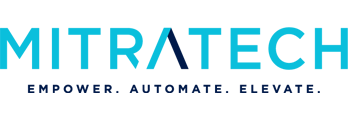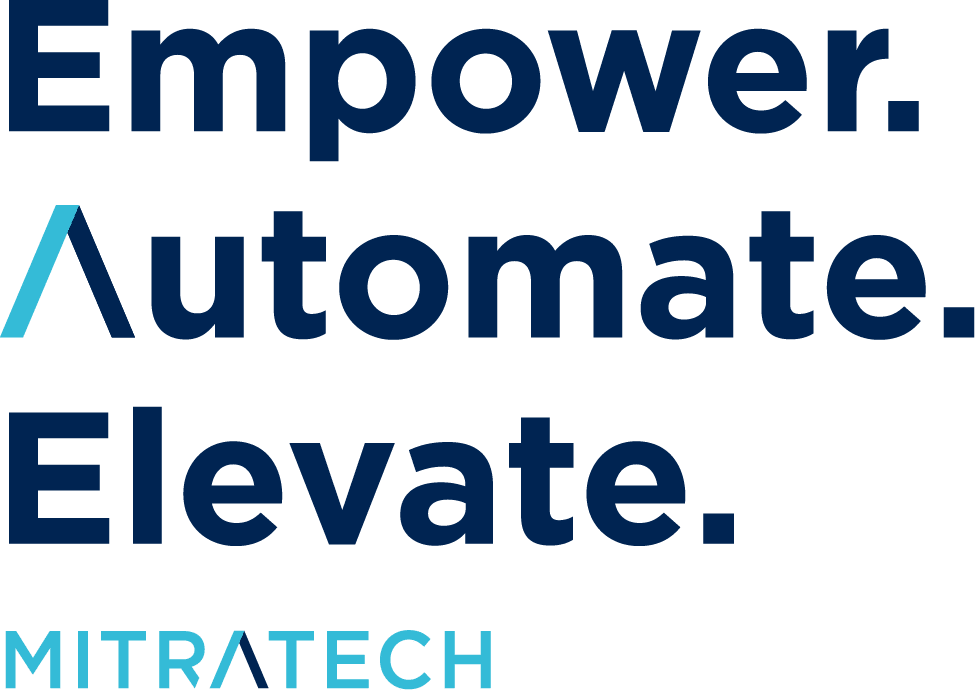Every open role comes with a cost. Your stakeholders feel it when projects slow down, revenue targets slip, or teammates pick up extra work to cover the gap. That’s why time-to-fill continues to be one of the most closely watched metric on my TA team.
HR.com’s HR Research Institute’s Future of Recruitment Technologies 2025-26 report shows what many of us already sense, that the gap between how fast we think we can hire and how long it really takes is getting wider.
This gap is forcing HR leaders to rethink not just speed, but the whole candidate experience, and how AI and technology fit into the recruitment and hiring process.
Table of Contents
One of the clearest findings from HR.com’s report is just how uneven the hiring journey has become. Time-to-fill isn’t moving in a straight line; it swings widely depending on the role, the skills required, and the level of organizational readiness.
While entry-level positions can often be filled in a matter of weeks, senior and specialized roles are dragging out for months, leaving leadership gaps and slowing momentum.
According to the 2025 survey, organizations report very different timelines depending on the type of role:
- Entry-level roles: Most organizations take 30-60 days, with a quarter reporting 90+ days.
- Mid-level roles: 44% report 31-60 days, while 17% stretch past 90 days.
- Senior-level roles: Nearly 40% need more than 90 days to fill.
- Exempt roles: 44% fall in the 31-60 day window, but almost 40% push past 90.
- Nonexempt roles: Most fall in 30-60 days, but 25% extend beyond 90.
Looking at these time-to-fill numbers, I see more than just hiring delays. Every open role is a test of whether your organization can move talent into place fast enough to meet its goals without compromising on quality or compliance.
What the Time-to-Fill Patterns Reveal at a Strategic Level
As I mentioned, the widening time-to-fill gap across job levels tells us something more than “process inefficiency.” It signals structural misalignment, between the urgency of business needs, the realities of labor markets, and the way organizations are set up to recruit.
Talent Scarcity Meets Hiring Fragility
The backdrop in 2025 is unmistakable. Job openings still outpace job seekers in many sectors, even as the U.S. labor market cools from the pandemic frenzy. In July 2025, there were 7.2 million openings, paired with persistently low layoffs (U.S. Bureau of Labor Statistics).
Layoffs remain historically low, holding steady at 1.8 million (1.1%). For comparison, pre-pandemic levels hovered around the same range, while pandemic-era layoffs were six times higher. Today’s numbers reflect a labor market that’s cooled from the frenzy but where employers are still reluctant to let people go. This “balanced but slow” posture means every unfilled role stays costly for longer.
SHRM continues to warn that labor shortages are one of HR’s top strategic challenges this year. Many roles sit open long enough to become bottlenecks in workforce planning—particularly in industries such as healthcare, finance, and manufacturing, where specialized skills are already scarce. Add in a wave of state-level pay transparency laws (Minnesota joined California, Colorado, New York, and Washington in 2025), and you see how compensation clarity has become just as important as speed. If pay signals are poor or unclear, pipelines dry up before they start.
Leadership Bottlenecks
Perhaps the most troubling delays show up at the top of the org chart. Senior hires are dragging into “quarter-plus” timelines. This means decision making seats stay empty, succession plans stall, and leadership teams run without the strategic depth they need. In highly regulated industries, delayed executive hiring also creates governance risk, since regulators expect clear lines of accountability.
It’s not just your organization feeling the pinch. The UK is seeing a surge in external CEO appointments—52% in FTSE 100 and 62% in FTSE 250 companies over the past year, largely because internal pipelines aren’t ready fast enough when crises or transformations hit, as reported by the Financial Times.
It’s a real strategic risk. In regulated industries, these delays don’t just challenge business continuity, they elevate governance risk, too. With regulations shifting at a rapid pace, and divergence across jurisdictions growing more complex, boards and audit committees expect clear, accountable leadership. KPMG’s “2025 Regulatory Challenges” report confirms that governance clarity and leadership readiness are becoming more critical than ever.
Hidden Friction in Mid- and Nonexempt Roles
Roles that should be more straightforward (i.e., mid-level managers, nonexempt staff) are still slipping into 90+ day timelines. This isn’t just about market scarcity, but reflects friction inside the process: approval bottlenecks, outdated systems, and manual workflows that burn recruiter hours.
Regulatory complexity makes it worse. Compliance with multi-jurisdiction labor laws, expanding background check requirements, and new state-level employment rules often extend cycle times. At the same time, organizations underinvest in process automation, leaving recruiters juggling manual handoffs where technology could reduce drag.
Financial and Cultural Fallout
An unfilled role can be a financial drain. Oft-cited SHRM data shows every open position costs organizations between $4,000 and $9,000 per month, factoring in lost productivity, overtime, burnout, and project delays. When mid-level or executive roles stay vacant for months, that cost multiplies, and so does the risk to morale and performance.
On the organizational culture side, recruiters describe mounting burnout and morale issues when teams backfill for too long or watch candidates drop out after long waits.
Offer Acceptance and Candidate Behavior
Speed isn’t the silver bullet. Market data shows U.S. offer acceptance rates at 79%, the lowest among peer markets (SmartRecruiters). Even fast-moving organizations are losing talent at the final hurdle.
The reasons go beyond time. Compensation clarity, candidate experience, and pay equity all matter. With pay transparency laws expanding, vague or delayed offers are becoming pipeline-killers.
Candidate behavior data reinforces this point. Appcast’s multi-year analysis shows application rates spike when friction drops—from 3.6% at 15+ minutes to 12.5% when applications take under five minutes. By the end of 2024, apply rates hit 6.1%, up 35% year over year, with organizations that removed friction seeing the biggest lift.
Pulling It All Together
Put simply, the time-to-fill benchmarks are a mirror. They reflect structural talent shortages, leadership gaps, regulatory complexity, and cultural costs, all converging in the hiring funnel.
This is the context HR leaders are carrying into Q4 planning and 2026 strategy.
The question is no longer just, “How fast can we hire?” It’s, “How well are we balancing speed with fairness, compliance, and trust?”
Why Speed Matters More Than Ever
Candidate patience is shrinking. With mobile-first job applications now the norm and competitors moving faster, a drawn out hiring process costs more than talent, it costs credibility. Our data shows that nearly half of organizations only measure time-to-fill “average” at best, underscoring the difficulty HR leaders face in improving this metric.
The impact is immediate. When a role stays open 60 or 90 days, productivity stalls. A slow start to onboarding means new hires can’t contribute when they’re most eager. The best candidates may accept other offers before yours is finalized.
- Conversion math: Short, mobile‑first applies materially boost completion; long forms crater it. That cascades into thinner slates and more days of it (Appcast).
- Scheduling drag is a primary bottleneck: Automation routinely cuts days by removing calendar ping‑pong and replans. Mitratech clients report savings from 4-8+ days.
- Onboarding lag compounds time‑to‑start: AI employee onboarding (access, forms, FAQs) is already saving days and smoothing Day 1.
Technology’s Role in Improving Time-to-Fill Performance
The majority of organizations (70%+) use an applicant tracking system (ATS), but gaps remain in automation. Less than half use automated scheduling, onboarding automation, or recruitment analytics. That means recruiters are still spending hours on manual tasks while candidates wait.
AI is starting to fill that gap: nearly half of organizations already use it “to some extent” for résumé screening, candidate discovery, and even job description writing. These are some of the ways we use AI on my team.
The benefits are tangible:
- Faster candidate matching
- Time savings in early screening
- Improved scheduling and engagement
However, AI is under‑scaled and under‑governed. A McKinsey HR Monitor 2025 finds only a few HR teams use AI and automation at scale; most are still piloting. Many remain under-equipped to realize the full potential of technological transformation.
This isn’t about playing catch-up, it’s about what you can unlock next. Imagine moving past small AI pilots and finally scaling automation, compliance checks, and system integrations. Suddenly, time-to-fill doesn’t drag, it drops. Recruiters on your team spend less time chasing paperwork and more time advising the business. Candidates move smoothly from offer to onboarding without losing momentum. And your stakeholders see roles filled fast enough to keep growth on track. In 2026, time-to-fill stops being a number you report, it becomes the lever that gives you a competitive edge.
Balancing Speed, Compliance, and Fairness
Faster isn’t always better if it comes at the expense of compliance or trust. Survey respondents flagged major concerns with AI, including bias risk (55%), legal exposure (47%), and lack of transparency (26%). For more information on compliant hiring, download our Compliant Hiring Checklist.
For HR leaders, the challenge is clear: reduce time-to-fill without creating risk. This means choosing technologies that are not only fast but audit-ready, bias-aware, and compliant with evolving regulations.
Why Time-to-Fill Is Becoming HR’s Toughest AI Challenge
Looking ahead, the HR leaders polled expect recruitment to become more automated, data-driven, and candidate-focused. That’s important, but here’s the part to sit with as you plan for Q4 and into 2026: speed alone won’t get you there. If your hiring cycle is fast but sloppy, or fast but non-compliant, you’ve just traded one problem for another.
The real advantage comes from striking a balance: move quickly enough to compete for talent, while proving to candidates and regulators that your process is fair, transparent, and airtight. That balance is what will distinguish the HR teams who manage to get by from the ones who become true business drivers in 2026.
Time-to-fill is no longer just a KPI you report up to leadership. It’s the clearest reflection of whether your talent strategy actually works. If it’s creeping upward, you don’t just have a hiring problem, you have a strategy problem.
Here’s what the future looks like when you get it right: a candidate accepts on Friday. By Monday, their background check is cleared, their onboarding documents are generated, and their first-day agenda is set, all without recruiter intervention. The candidate feels confident. The manager feels supported. HR feels in control. That’s the difference automation and integration make.
And here’s the bigger picture: reducing time-to-fill isn’t just about filling roles faster, it’s about restoring agility to the business. Every day you save gets projects back on track, protects revenue, and builds credibility with leadership. Every smooth hire builds trust with candidates, strengthens your employer brand, and lowers the risk of turnover.
Mitratech helps HR teams cut hiring delays, streamline onboarding, and stay audit-ready, all without sacrificing candidate experience. Our comprehensive HR technology suite spans background screening, I-9 and immigration case management, DEI programs, HR workflow automation, and more. It’s built to give HR leaders a single, integrated platform to reduce risk, improve efficiency, and deliver a better employee journey from Day 1.
The organizations that thrive in 2026 won’t just hire faster, they’ll hire smarter, fairer, and with systems resilient enough to stand up to regulators, auditors, and competitors alike.
👉 Explore our employee lifecycle management and HR compliance intelligence solutions to see how Mitratech can help you and your team.
Time-to-Fill FAQs
What are time-to-fill metrics?
Time-to-fill measures the number of days between when a job requisition is opened and when an offer is accepted (or, in some organizations, when the new hire starts). It’s one of the most widely tracked recruiting metrics because it reflects both the efficiency of the hiring process and the organization’s ability to compete for talent.
What’s time-to-fill versus time-to-hire?
These terms are often confused but measure slightly different things:
- Time-to-fill → From the date a requisition is opened until an offer is accepted (sometimes tracked until the start date).
- Time-to-hire → From the date a candidate enters the pipeline (e.g., applies or is sourced) until the day they accept the offer.
In short, time-to-fill reflects the organization’s overall hiring speed, while time-to-hire reflects the candidate’s journey once in the funnel.
What’s the average time-to-fill?
It varies widely by role and industry. HR.com’s Future of Recruitment Technologies Report found:
- Entry-level roles: 30–60 days (with a quarter taking 90+ days).
- Mid-level roles: 31–60 days for most, 17% stretching past 90.
- Senior roles: Nearly 40% take longer than 90 days.
- Nonexempt roles: Typically 30–60 days, though 25% still exceed 90.
External benchmarks place the U.S. average at ~35 days, slightly faster than the global average of 38.



